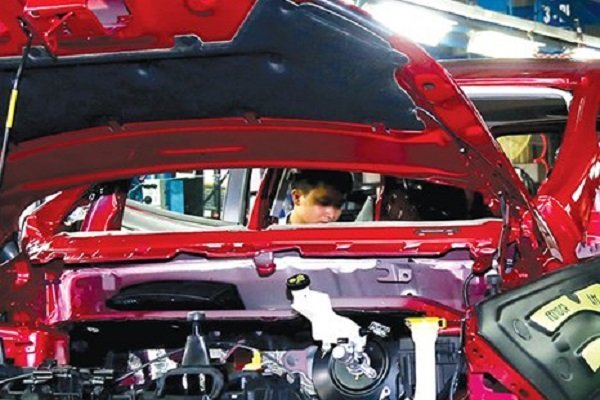Barriers remain for Vietnam auto industry’s development
A report on the competitiveness of the Vietnamese automotive industry released in late 2021 shows that in the 2017-2019 period, the top manufacturers of cars with less than 9 seats were foreign brands.
In 2017, Toyota Vietnam was the market leader with 31.2% market share; followed by Truong Hai Company with Kia, Mazda, and Peugeot brands, accounting for 19.21% of the market share. In 2018, Thanh Cong Group with the Hyundai brand rose to second place with 20.5% market share. In 2019, Hyundai brand occupied the leading position with 29.64% market share, surpassing Toyota.
For the passenger car segment, the leading firms are Truong Hai (Thaco), Do Thanh, Samco, Tracomeco, Haeco, Daewoo and Vinamotor. Thaco continuously dominates the market, with a market share of over 40%, followed by Do Thanh with a market share of over 20%.
For the truck segment, Thaco was the leader in the period 2014-2016 with 45% of the market share. From 2017-2019, the truck market saw the participation of new brands such as Hyundai Thanh Cong, Chien Thang, Hoa Mai, but Thaco still ranked first with a market share of over 40%. During the whole period, Hino, Isuzu and Thaco were always the three most popular product lines in Vietnam.
The report said the automobile market in Vietnam is characterized by high barriers for new entries, along with large investment capital, so there are not many enterprises capable of competing. This makes for high concentration, which can generate anti-competitive behavior. It also requires competition authorities to monitor, evaluate and scrutinize anticompetitive practices.
Since 2017, auto manufacturing, assembling, importing and auto maintenance services have been added to conditional investment and business lines. This stirred controversy, with two opposing views.
The first point of view is that automobiles are high-tech products with complex structure and great value. Vehicle quality greatly affects human life, health, traffic safety and environmental protection. Therefore, it is necessary to apply business conditions on this product.
The second point of view argues that automobile production, assembly, import, and auto maintenance should not be included in the list of conditional business lines because there are already sufficient regulations and standards for control.
Breaking down barriers
Finally, the National Assembly Standing Committee agreed with the Government’s proposal, and Decree 116/2017 ND-CP was issued by the Government. Accordingly, enterprises manufacturing, assembling, and importing cars and providing automobile maintenance services in Vietnam must be licensed with strict conditions.
For auto manufacturing and assembly enterprises, they must have factories, technology lines, quality inspection lines, automobile test lines and auto maintenance facilities. For enterprises that import cars, they must have automobile maintenance establishments, and written confirmation of the right to act on behalf of foreign automobile manufacturers and assemblers to recall imported cars in Vietnam.
Because of this regulation, many commercial enterprises that import CBU cars are immediately excluded from the market. As for the domestic production and assembly of cars with 9 seats or less, there is only Vinfast.
With a huge capital investment of more than 1 billion USD, Vinfast launched three models using internal combustion engines in 2019.
Accounting for 11% of the market share of cars with 9 seats or less, due to large investments and high taxes, this manufacturer suffered huge losses. In 2020, Vinfast incurred a loss of more than 10,000 billion VND, and in the second half of 2021, it lost 11.3 trillion VND. The more cars it sold, the more it incurred losses. It announced its withdrawal from internal combustion engine cars in early 2022 to focus on electric vehicles.
The Government recently issued Resolution 02/NQ-CP 2022 with the goal of improving the business environment and enhancing national competitiveness in 2022.
According to expert Nguyen Dinh Cung, this resolution has a new and better approach. The previous regulations mainly required the reduction of business conditions, while the new resolution clearly states the reduction of “lists and lines” of conditional businesses and investment.
Over the past, the business environment in Vietnam has improved a lot, but expert Nguyen Dinh Cung said that it was not substantial, and there are still many barriers. Most of the business conditions that have been cut and simplified are in the stage when the enterprise has come into operation, or when the enterprise has implemented specific business activities. In the earlier periods, from having a business idea to deciding to invest in a project or set up a business, there are still many barriers.
There have been many proposals to reduce and simplify, but they have not been implemented by state management agencies. Therefore, the new regulations will help make the business environment more open, remove barriers, and make it easier for businesses to enter the market, expert Nguyen Dinh Cung said.
Insiders have asked, in the new situation, is it necessary to keep the auto industry on the list of conditional investment and business lines?
Tran Thuy
Source: https://vietnamnet.vn/en/feature/barriers-remain-for-vn-auto-industry-s-development-815312.html


 Thailand
Thailand




